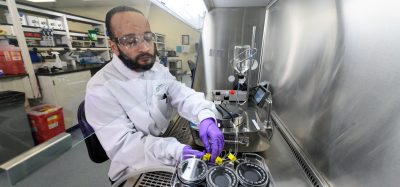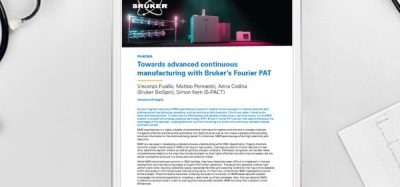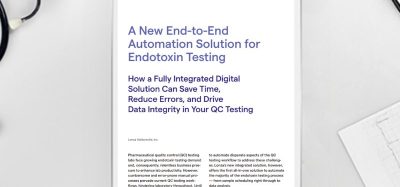Putting the ‘fun’ into functional genomics: a review of RNAi genomewide cellular screens
Posted: 18 December 2012 |
As RNA interference (RNAi) enters its teenage years from the first critical observations, it has now reached a multi-billion pound industry. There are few research areas that have expanded as quickly and spectacularly as the field of RNAi. The potential of RNAi initially sparked a functional genomics gold rush. Different uses of this technology in genomewide screens have identified genes involved in fundamental biological processes. There are now hundreds of research papers reporting genome-wide screens using cell culture to investigate the building blocks of the cell. However tempting it may be to speculate that this technology could be the new magic bullet to all our research needs, especially after some of the previous successes, some basic aspects of the RNAi technology and screening process still need to be addressed and improved upon. This review will investigate the strengths and weaknesses of our current technology, suggesting improvements and highlighting some of the novel growth areas in this field.
Our foundations of cell biology rely upon an understanding of cellular pathways, the components of which have been investigated over the last 40 years or so. Recent embellish – ment of the pathways has been carried out using models in cell culture with RNAi technology1. Many techniques have been used to reveal the functions of core pathway proteins, but few have sparked the imagination like the RNAi screen with the potential to systematically knock down the expression of every gene in the genome.


As RNA interference (RNAi) enters its teenage years from the first critical observations, it has now reached a multi-billion pound industry. There are few research areas that have expanded as quickly and spectacularly as the field of RNAi. The potential of RNAi initially sparked a functional genomics gold rush. Different uses of this technology in genomewide screens have identified genes involved in fundamental biological processes. There are now hundreds of research papers reporting genome-wide screens using cell culture to investigate the building blocks of the cell. However tempting it may be to speculate that this technology could be the new magic bullet to all our research needs, especially after some of the previous successes, some basic aspects of the RNAi technology and screening process still need to be addressed and improved upon. This review will investigate the strengths and weaknesses of our current technology, suggesting improvements and highlighting some of the novel growth areas in this field.
Our foundations of cell biology rely upon an understanding of cellular pathways, the components of which have been investigated over the last 40 years or so. Recent embellish – ment of the pathways has been carried out using models in cell culture with RNAi technology1. Many techniques have been used to reveal the functions of core pathway proteins, but few have sparked the imagination like the RNAi screen with the potential to systematically knock down the expression of every gene in the genome.
With the identification of RNAi and its mechanism of action came the ability to knockdown, seemingly, any gene and investigate the resulting loss of function phenotype2-4. In fact, this phenomenon had been used for almost a decade in fungal and plant transgenic systems and was commonly known as ‘co-suppression or quelling’. It was largely ignored by animal biologists, since it was thought to be a specific effect in these organisms5-8. The rapid transfer of this knowledge to animal cell culture and the expansion of this technology into larger gene collections provided the foundation for genome-wide RNAi screens9-12. The first few screens were small in comparison to current Herculean efforts and relied heavily on manual labour. Rumours of post-docs with repetitive strain pipette-induced injuries were heard, but the rapid movement towards a pharmaceutical, high-throughput type approach using automated liquid handling and data acquisition has reduced the pain, putting the fun back into RNAi screens. However, to every upside there is a downside, as the cost of equipment is expensive and there are still unresolved technical issues. Due to this, there are a handful of screening facilities offering automation equipment and expertise for high-throughput screening in both mammalian and Drosophila cell culture systems. For more information regarding models of Drosophila RNAi screening facilities, such as the one found at the University of Sheffield (Sheffield RNAi Screening Facility) see13, or the one at the University of Harvard (Drosophila RNAi Screening Centre) see14. There are two basic screening setups, reliant either upon articulated robotics and conveyor belt systems to move plates between equipment for either processing or analysis, or the more cost-effective and flexible method, using a workstation approach with humans moving plates around the lab and manually operating machines15. For a more in depth look, the subtleties of the genome-wide RNAi screen is reviewed by Mohr et al1. One of the key drawbacks of genome-wide RNAi screens is the occurrence of false positives, however there are methods and libraries that address these issues16-19. Some researchers have improved the processing of the data based upon prioritisation with other resources20. Similar to other genomic technologies, one should be aware that multiple validation methods should be employed to confirm hits, such as repetition of the observation with the original RNAi probe and the repetition of the result with different RNAi molecules, the use of rescue constructs and the use of other screens and databases should be used to firm-up hits i.e., protein interaction and expression databases20-22.
The tools of RNAi in cell culture
A variety of RNAi vectors and organisms can be used for genome-wide cellular RNAi screens. In mammalian cells, RNAi can be induced using short-hairpin RNA (shRNA), small interfering RNA (siRNA) and endoribonuclease-prepared short interfering RNA (esiRNA), each of which has scenario specific benefits23-25. Drosophila has had widespread use in identifying genes and mechanisms involved in cellular processes and the main vector for RNAi are long doublestranded RNAs (dsRNA)26. However attractive genome-wide screens are in mammalian cells, there are a number of challenges, including gene number, redundancy, off-target effects, reagent costs and difficult to transfect cell types. Besides those specific cases, the knock-down of genes in Drosophila cell culture is somewhat more amenable than mammalian cell types and makes an attractive cheap alternative27. Regardless of conservation of the basic biology, there are still research questions not amenable to Drosophila screens, such as cell type specific screens, pathogen screens or pathways that are not conserved. Both human and Drosophila RNAi cellular screens have their place in functional genomics.
Do you need to automate?
A wide variety of automation options are available to screeners and these usually depend upon the assay and type of data required. Automation, however, is not only an option for sample preparation and processing, but can be used for data acquisition and analysis to increase screening speed and ultimately a final list of results. The instruments used for automated tasks should be regularly monitored during screens, due to physical and software crashes. Edge effects, generated from plate sealing problems, or temperature variation within incubators and liquid handling errors causing patterning effects across plates can all arise during a screen and screeners should be aware of these artefacts. Thus, data should to be scrutinised once it has been generated and false positives reduced by the current methods available28. Normal practice is to make a log file of anomalies that occur during screening, which helps with statistical analyses at a later date. There are many statistical methods for quality control, including the use of visualisation tools, such as heat maps and the analysis of variation of controls across plates. Some data processing platforms allow for the use of these tools even over the web29 and new methods for the improvement of such practices are always welcome. If automation cannot be used, one can address less data rich questions using smaller sub-set RNAi collections, providing a more targeted approach, and these can be based upon Gene Ontology annotations or specific collections of genes and many vendors and screening centres offer sub-set collections30-32.
There is little evidence available to support which method produces the best results and most dedicated units employ variations of automation, depending upon the scalability of the assay. However, beyond liquid handling and plate washing, the acquisition of data and its processing is better served in a highly auto – mated manner. For visualisation and analysis of acquired data, open resources like CellHTS233, or packages such as Spotfire34 and AcuityXpress (Molecular Devices, Sunnyvale, CA) can be used for similar results.
As a generalisation, more screens employ high content microscopy35, but plate reader or ‘biochemical’ assays are still used when specific answers are needed, or if the answers are constrained by the reagents available. Recent advances in imaging speed, batch processing of image data and data analysis and manipulation have made high content microscopy screens more amenable, combined with the tools to cope with cell to cell variation36. One example of where little work has been carried out with imaging is that of the JAK/STAT signalling pathway. JAK/STAT signalling plays a major role in a number of diseases and a number of pathway components make ideal drug targets37,38. Drosophila has been a major model for researching JAK/STAT components, as it has less redundancy and is more streamlined compared to its vertebrate gene duplication rich genomes39,40. JAK/STAT pathway assays in Drosophila have relied primarily upon luciferase reporters utilising the plate reader for the recording of a transcriptional output and some genome-wide screens have been carried out using this type of reporter41-43. There are currently no widely available microscopy tools for examination of the Drosophila JAK/STAT pathway, however there are a plethora of antibodies available for vertebrate JAKs, STATs, cytokines and receptors that are commercially available. Given the availability of these reagents, future screens are likely to focus on investigating phosphorylated JAK or STAT levels or STAT nuclear translocation events, maybe using Human disease cell types. However, one area of screening that has burgeoned is that of pathogen biology, of which there are too many to report. Interestingly, a number of different approaches are being utilised to determine the genes required for pathogenesis44,45.
Current advances in RNAi technology
The genetic interactions of cellular pathways can be investigated using double RNAi knock-down, sometimes named co-RNAi, where two different genes can be simultaneously targeted46,47. The addition of two RNAi reagents within a single well can be used for a number of purposes. Primarily, one can investigate genetic inter actions between partners, in the form of synthetic interactions, similar to previous studies with yeast and C.elegans48,49. A greater than expected or augmented phenotype would be termed a synergistic interaction between the two target genes. The opposite effect would be considered a diminished phenotype. Thus, this technology could theoretically be used to screen a collection of RNAi reagents with a primary interacting RNAi. i.e., take a disease gene, knock it down and then introduce it to a library of RNAi molecules for interactions. Horn et al., have used this technology, taking it one step further by varying the RNAi concentrations across experiments and have studied inter actions of many RNAi molecules across a grid design. This type of experimentation has revealed new partners in well-studied pathways in Drosophila, similar to work carried out in C.elegans. Although genome-wide single-gene knock-down studies vastly expand our knowledge of single gene function, especially using multi-parametric acquisition techniques, they do not address redundancy. The development of co-RNAi tools for the mapping of genetic interactions should be a key pursuit in identifying genetic redundancy.
Future advances, heterogeneity, community spirit and the application of Moore’s Law
Drosophila screens, similar to human genomewide screens, have a shared problem of reproducibility between screens. One of the striking observations for screens that have been duplicated is the lack of hit overlap from similar genome-wide RNAi screens50, similar too for the JAK/STAT screens reported in this review40. One could consider this as a sampling/statistical issue, or a cellular heterogeneity/environmental problem. Pelkmans and colleagues have shown that reproducibility of RNAi screens can be improved when the cell line population heterogeneity is considered51. They observe that when population-determined heterogeneity is accounted for, differences between the cellular behaviour can be smoothened out, providing both an explanation for variability and an improvement to the analysis of the screens. Other methods have been employed to increase consistency of screens and as a wider comm – unity, the use of MIARE should be considered as both a starting place and as a repository of data for the sharing and community-wide analysis52. Due to the cost of siRNAs, transfection reagents and antibodies in both 96 and 384 well format, miniaturisation is becoming a popular area for improvement53,54. This can be performed either in the slide format or in smaller well format within plates. One drawback with increased throughput is that of consistency of results. Similar issues were identified in the initial phases of the pharma ceutical small molecule screen miniaturisation process. Only time will tell whether there are solutions available to increase both speed and data quality during our pursuit of an RNAi Moore’s Law55.
Acknowledgements
The author wishes to thank Katherine H. Fisher and Wojciech J. Stec for valuable comments. The Sheffield RNAi Facility is funded through a Welcome Trust Grant (reference number 084757).
References
1. Mohr, S., Bakal, C. & Perrimon, N. Genomic screening with RNAi: results and challenges. Annu Rev Biochem 79, 37-64 (2010)
2. Fire, A. Et al. Potent and specific genetic interference by double-stranded RNA in Caenorhabditis elegans. Nature 391, 806-811 (1998)
3. Hamilton, A. J. & Baulcombe, D. C. A species of small antisense RNA in posttranscriptional gene silencing in plants. Science 286, 950-952 (1999)
4. Elbashir, S. M. Et al. Duplexes of 21-nucleotide RNAs mediate RNA interference in cultured mammalian cells. Nature 411, 494-498 (2001)
5. Romano, N. & Macino, G. Quelling – transient inactivation of gene-expression in neurospora-crassa by transformation with homologous sequences. Mol Microbiol 6, 3343-3353 (1992)
6. Napoli, C., Lemieux, C. & Jorgensen, R. Introduction of a chimeric chalcone synthase gene into petunia results in reversible co-suppression of homologous genes in trans. Plant Cell 2, 279-289 (1990)
7. Smith, C. J. S. Et al. Expression of a truncated tomato polygalacturonase gene inhibits expression of the endogenous gene in transgenic plants. Mol Gen Genet 224, 477-481 (1990)
8. Mueller, E., Gilbert, J., Davenport, G., Brigneti, G. & Baulcombe, D. C. Homology-dependent resistance – transgenic virus-resistance in plants related to homologydependent gene silencing. Plant J 7, 1001-1013 (1995)
9. Clemens, J. C. Et al. Use of double-stranded RNA interference in Drosophila cell lines to dissect signal transduction pathways. P Natl Acad Sci USA 97, 6499-6503 (2000)
10. Harborth, J., Elbashir, S. M., Bechert, K., Tuschl, T. & Weber, K. Identification of essential genes in cultured mammalian cells using small interfering RNAs. J Cell Sci 114, 4557-4565 (2001)
11. Boutros, M. Et al. Genome-wide RNAi analysis of growth and viability in Drosophila cells. Science 303, 832-835 (2004)
12. Kiger, A. A. Et al. A functional genomic analysis of cell morphology using RNA interference. J Biol 2, 27 (2003)
13. Brown, S. Institutional Profile: The Sheffield RNAi screening facility: a service for high-throughput, genome-wide Drosophila RNAi screens. Future Med Chem 2, 1805-1812 (2010)
14. Flockhart, I. Et al. Flyrnai: the Drosophila RNAi screening center database. Nucleic Acids Res 34, D489-D494 (2006)
15. Ramadan, N., Flockhart, I., Booker, M., Perrimon, N. & Mathey-Prevot, B. Design and implementation of highthroughput RNAi screens in cultured Drosophila cells. Nat Protoc 2, 2245-2264 (2007)
16. Perrimon, N. & Mathey-Prevot, B. Matter arising – Off targets and genome scale RNAi screens in Drosophila. Fly 1, 1-5 (2007)
17. Sigoillot, F. D. Et al. A bioinformatics method identifies prominent off-targeted transcripts in RNAi screens. Nat Methods 9, 363-U66 (2012)
18. Horn, T. & Boutros, M. E-rnai: a web application for the multispecies design of RNAi reagents–2010 update. Nucleic Acids Res 38, W332-9 (2010)
19. Horn, T., Sandmann, T. & Boutros, M. Design and evaluation of genome-wide libraries for RNA interference screens. Genome Biol 11, R61 (2010)
20. Wang, L., Tu, Z. & Sun, F. A network-based integrative approach to prioritize reliable hits from multiple genomewide RNAi screens in Drosophila. BMC Genomics 10, 220 (2009)
21. Sigoillot, F. D. & King, R. W. Vigilance and Validation: Keys to Success in RNAi Screening. Acs Chem Biol 6, 47-60 (2011)
22. Booker, M. Et al. False negative rates in Drosophila cellbased RNAi screens: a case study. BMC Genomics 12, 50 (2011)
23. Li, L., Xu, H. F., Min, T. S. & Huang, W. D. Reversal of MDR1 gene-dependent multidrug resistance using low concentration of endonuclease-prepared small interference RNA. Eur J Pharmacol 536, 93-97 (2006)
24. Grimm, D. Small silencing RNAs: State-of-the-art. Adv Drug Deliver Rev 61, 672-703 (2009)
25. Rao, D. D., Vorhies, J. S., Senzer, N. & Nemunaitis, J. SiRNA vs. ShRNA: Similarities and differences. Adv Drug Deliver Rev 61, 746-759 (2009)
26. Falschlehner, C., Steinbrink, S., Erdmann, G. & Boutros, M. High-throughput RNAi screening to dissect cellular pathways: a how-to guide. Biotechnol J 5, 368-376 (2010)
27. Steinbrink, S. & Boutros, M. RNAi screening in cultured Drosophila cells. Methods Mol Biol 420, 139-153 (2008)
28. Echeverri, C. J. Et al. Minimizing the risk of reporting false positives in large-scale RNAi screens. Nat Methods 3, 777- 779 (2006)
29. Pelz, O., Gilsdorf, M. & Boutros, M. Web cellhts2: A webapplication for the analysis of high-throughput screening data. BMC Bioinformatics 11, ARTN 185 (2010)
30. Mackeigan, J. P., Murphy, L. O. & Blenis, J. Sensitized RNAi screen of human kinases and phosphatases identifies new regulators of apoptosis and chemoresistance. Nat Cell Biol 7, 591-U19 (2005)
31. Root, D. E., Hacohen, N., Hahn, W. C., Lander, E. S. & Sabatini, D. M. Genome-scale loss-of-function screening with a lentiviral RNAi library. Nat Methods 3, 715-719 (2006)
32. Flockhart, I. T. Et al. Flyrnai.org-the database of the Drosophila RNAi screening center: 2012 update. Nucleic Acids Res 40, D715-D719 (2012)
33. Boutros, M., Bras, L. P. & Huber, W. Analysis of cell-based RNAi screens. Genome Biol 7, ARTN R66 (2006)
34. Ahlberg, C. Visual exploration of HTS databases: bridging the gap between chemistry and biology. Drug Discov Today 4, 370-376 (1999)
35. Niederlein, A., Meyenhofer, F., White, D. & Bickle, M. Image Analysis in High Content Screening. Comb Chem High T Scr 12, 899-907 (2009)
36. Knapp, B. Et al. Normalizing for individual cell population context in the analysis of high-content cellular screens. BMC Bioinformatics 12, ARTN 485 (2011)
37. Neurath, M. F. & Finotto, S. IL-6 signaling in autoimmunity, chronic inflammation and inflammation-associated cancer. Cytokine Growth F R 22, 83-89 (2011)
38. Ara, T. & declerck, Y. A. Interleukin-6 in bone metastasis and cancer progression. Eur J Cancer 46, 1223-1231 (2010)
39. Vvhombria, J. C. & Brown, S. The fertile field of Drosophila JAK/STAT signalling. Curr Biol 12, R569-75 (2002)
40. Muller, P., Boutros, M. & Zeidler, M. P. Identification of JAK/STAT pathway regulators–insights from rnai screens. Semin Cell Dev Biol 19, 360-369 (2008)
41. Baeg, G. H., Zhou, R. & Perrimon, N. Genome-wide RNAi analysis of JAK/STAT signaling components in Drosophila. Genes Dev 19, 1861-1870 (2005)
42. Muller, P., Kuttenkeuler, D., Gesellchen, V., Zeidler, M. P. & Boutros, M. Identification of JAK/STAT signalling components by genome-wide RNA interference. Nature 436, 871-875 (2005)
43. Kallio, J. Et al. Eye transformer is a negative regulator of Drosophila JAK/STAT signaling. FASEB J 24, 4467-4479 (2010)
44. Chong, R., Squires, R., Swiss, R. & Agaisse, H. RNAi Screen Reveals Host Cell Kinases Specifically Involved in Listeria monocytogenes Spread from Cell to Cell. Plos One 6, ARTN e23399 (2011)
45. Karlas, A. Et al. Genome-wide RNAi screen identifies human host factors crucial for influenza virus replication. Nature 463, 818-U132 (2010)
46. Horn, T. Et al. Mapping of signaling networks through synthetic genetic interaction analysis by RNAi. Nat Methods 8, 341-346 (2011)
47. Axelsson, E. Et al. Extracting quantitative genetic interaction phenotypes from matrix combinatorial RNAi. BMC Bioinformatics 12, ARTN 342 (2011)
48. Mani, R., Onge, R. P. S., Hartman, J. L., Giaever, G. & Roth, F. P. Defining genetic interaction. P Natl Acad Sci Usa 105, 3461- 3466 (2008)
49. Fraser, A. Towards full employment: using RNAi to find roles for the redundant. Oncogene 23, 8346-8352 (2004)
50. Bushman, F. D. Et al. Host Cell Factors in HIV Replication: Meta-Analysis of Genome-Wide Studies. Plos Pathog 5, ARTN e1000437 (2009)
51. Snijder, B. Et al. Population context determines cell-to-cell variability in endocytosis and virus infection. Nature 461, 520-523 (2009)
52. Shamu, C. E., Wiemann, S. & Boutros, M. On target: A public repository for large-scale RNAi experiments. Nat Cell Biol 14, 115-115 (2012)
53. Chung, N. J. Et al. A 1,536-Well Ultra-High-Throughput siRNA Screen to Identify Regulators of the Wnt/beta-Catenin Pathway. Assay Drug Dev Techn 8, 286-294 (2010)
54. Lindquist, R. A. Et al. Genome-scale rnai on living-cell microarrays identifies novel regulators of Drosophila melanogaster TORC1-S6K pathway signaling. Genome Res 21, 433-446 (2011)
55. Moore, G. E. Cramming more components onto integrated circuits (Reprinted from Electronics, pg 114-117, April 19, 1965). P Ieee 86, 82-85 (1998)
About the author
Stephen Brown gained his BSc (Hons) in 1991 and PhD in 1997 from Plant Sciences at the University of Nottingham, working on the mechanism of co-supression. He did his postdoctoral training on Hox genes at the Department of Zoology, followed by training in mammary gland/breast cancer group in the Department of Pathology, both at the University of Cambridge. In 2004, he moved to the University of Manchester with a MRC career fellowship, investigating JAK/STAT signalling and has been at the University of Sheffield as the RNAi Screening Facility Manager since 2008.
Issue
Related topics
Cell culture automation, Functional genomics, Lab Automation, RNAi








